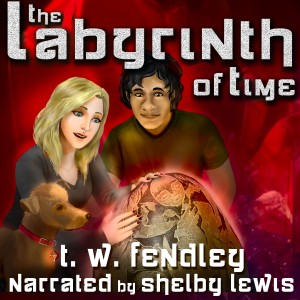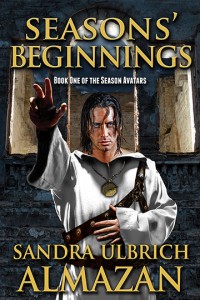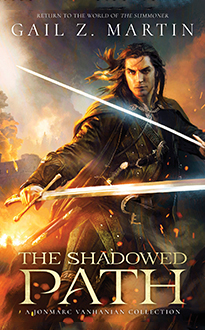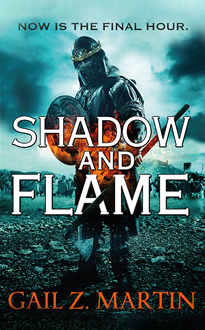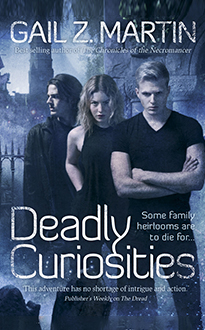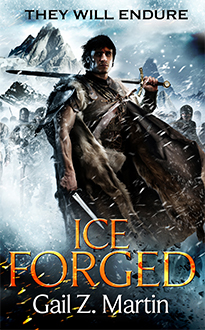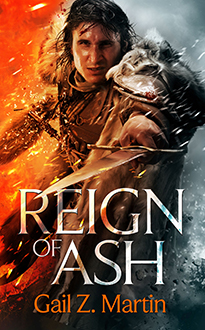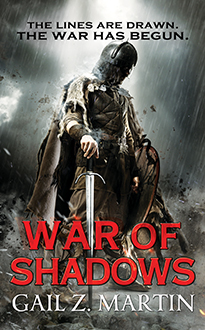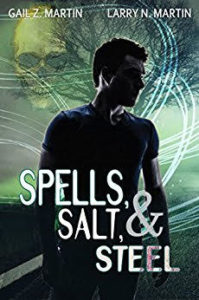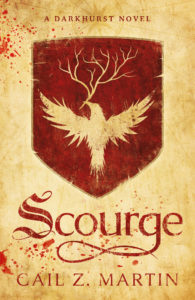By Gail Z. Martin
My new urban fantasy novel, Deadly Curiosities, is set in modern-day Charleston, SC. Charleston is one of the most-visited tourist cities in the U.S., and it deserves its fame. It’s an old city in a young country, and it’s played a big role in history, from the American Revolution through the Civil War and into the current headlines. It’s beloved for its food, its architecture, its horse-drawn carriage rides and its multitude of ghost stories. And when I visited Charleston a few years ago, I thought that all of those features made it a perfect setting for an urban fantasy series.
So how does an author handle writing fantasy in the real world?
Carefully, and with a lot of fact-checking.
In my Chronicles of the Necromancer series and my Ascendant Kingdoms Saga books, the setting is entirely of my own making. Yes, the kingdoms have a medieval, somewhat Western European look to them, but their history, their geography, everything about them is completely out of my imagination. There’s no historian who can gainsay me that I got the dates wrong for King So-And-So’s reign, or that some other historic point is incorrect. My world, my history.
That all goes out the window when you’re writing about a city where hundreds of thousands of people actually live, and many thousands more have visited.
I remember talking to someone who actually lived in Hawaii when Hawaii-Five-0 was on TV back in the 1970s. When I asked about the show, he said that people who lived in Honolulu regularly had a good chuckle when the cops on TV went to the corner of streets that didn’t intersect, buildings that didn’t exist, etc. Some of those “errors” might well have been intentional to avoid causing problems for real businesses. (There have been horror stories about companies or individuals who had an address or phone number used in a movie, TV show or song.) But whether intentional or not, the locals noticed.
On one hand, there’s no point setting a book in a real city if you aren’t going to use real landmarks and snippets of the city’s actual history. Otherwise, you might as well just make the whole place up and be done with it.
On the other hand, as an author you don’t want to accidently cast aspersions on real people (living or dead—unless they are so famous that they are essentially in the public domain, like Abraham Lincoln). And if you’re looking for a location for a gruesome murder, vicious ghoul attack, human sacrifice or some other less-than-flattering activity, it’s reasonable to think that private businesses don’t want that kind of thing linked to them, even in fiction. (Public sites, like monuments, parks, government buildings, etc. are fair game.)
So while the locale in which a major event happens in the book does exist (the old Navy yard), the buildings I reference are completely fictitious. So are the businesses that Cassidy patronizes as well as their owners. On the other hand, landmarks like the Charleston City Market, Battery Row, and White Point Garden do exist, grounding the story in some reality and giving visitors to Charleston a clear image of where the action takes place.
Some of the historical figures I mention (like the famous murderess Lavinia Fisher) are real. Others I created based on historical precedent, but not on a single historical person. When writing in a modern-day setting, I Google names to avoid accidentally using the name of a local person, and I’m cautious about using references to influential people from the past since they may well have living relatives in the area. None of these were things I had to worry about in my epic fantasy!
I’ve taken some liberties with the city’s history as well. If I can find an interesting event in history that works into the story, that’s great. But if I need something to advance the plot, I’ll insert a little alternate history to make it work. After all, if magic is operative and Charleston is filled with vampires and Voodoo, adding a new pirate or an extra hurricane here or there is not such a big stretch!
At the end of the day, I want the series to feel comfortable and familiar to those who know Charleston well. Maybe the Charleston in my books isn’t exactly the city they’ve visited or lived in, but all the right touchstones are there to make them feel at home. And with luck, the ways I’ve altered the city and its history to meet the needs of the story feel authentic, the Charleston that could be or might have been. After all, this is fiction!

